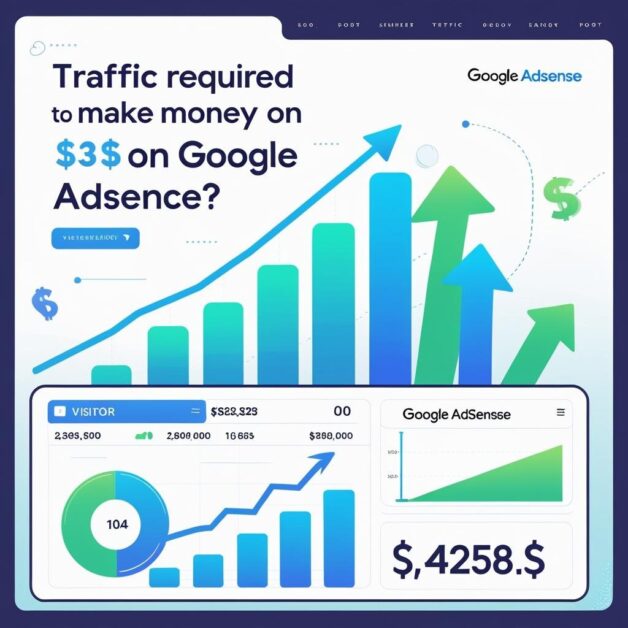10 Million TikTok Followers in 60 Days? My Wild Ride
It all started with a video of my cat, Kevin, trying to steal a piece of lasagna off my plate.
I wasn’t trying to be an “influencer.” Honestly, I was just procrastinating. I slapped a trending sound on the video, typed a goofy caption, and hit post. Then I went back to doomscrolling. An hour later, my phone was buzzing so much I thought it was going to vibrate off the coffee table. Kevin the Lasagna Cat had 50,000 views. And I had a ridiculous, intoxicating thought: “Could I actually earn and make money on TikTok?”
That one silly video sent me down a rabbit hole so deep I think I saw the Mad Hatter. I spent weeks binge-watching “gurus,” screenshotting articles, and feeling my brain slowly turn to mush. Everyone made it sound so easy. “Just go viral!” they’d say. “Just get brand deals!” Thanks, Chad. Super helpful.
The truth, I’ve learned, is a lot messier and a lot more interesting. It’s not a get-rich-quick scheme. For most of us regular folks, it’s a weird, experimental journey of throwing spaghetti at the wall to see what sticks. So, this is my story. Not as an expert, but as an everyday person who started with a cat video and a crazy idea. If you’re feeling overwhelmed by it all, then pull up a chair. You’re in the right place.
Drowning in a Sea of “Expert” Advice
Before I even attempted to make a single dollar, I first had to navigate the hurricane of online advice. And let me tell you, it’s a storm. You have people yelling about algorithms, others screaming about niches, and a whole lot of conflicting information that makes you want to just give up and go re-watch Kevin’s lasagna video.
It Felt Like Learning a New Language
At first, I was completely bogged down by the jargon. “UGC,” “Creator Marketplace,” “link in bio tools,” “affiliate plans.” It felt like I was studying for a final exam I didn’t even know I was taking. Every article or video I consumed seemed to add another five vocabulary words I had to go look up.
It was genuinely paralyzing. Because of this, I spent my first month doing absolutely nothing. I was so scared of doing the “wrong” thing that I just… didn’t do anything. I’d open the app, stare at the “plus” button, feel a wave of anxiety, and then close it again. Sounds familiar, right?
The “Just Go Viral” Myth Nearly Broke Me
The biggest misconception, and my personal pet peeve, is the idea that you need millions of followers to make a dime. Every “how-to” guide seemed to start with this unspoken assumption: Step 1, become famous. Step 2, profit. This is, from what I can tell, just plain wrong. It’s a myth that discourages so many people before they even start.
I tried to replicate the viral magic. I made another ten videos of my cat. I did the trending dances (badly, I might add). I tried the pointing-at-text-bubbles thing. Crickets. Kevin was a one-hit-wonder, apparently. This early failure was actually a blessing in disguise, because it forced me to realize that chasing virality is like chasing lightning. Instead, I had to find a more reliable forecast.
So, after my initial paralysis and my spectacular failure as a cat video auteur, I decided to get serious. Or, as serious as a person who considers filming their cat a career move can be. I picked three distinct paths that the experts talked about and decided to try them for myself, one by one. This is where my real education began.
Path #1: The Famous (and Confusing) TikTok Creator Fund
The first thing everyone tells you to do is join the TikTok Creator Fund. It sounds like the holy grail, doesn’t it? TikTok just… pays you for your views. It felt like the most straightforward path, so naturally, it’s where I started.
To even get in the door, you need to meet some basic TikTok monetization requirements. At the time I was trying, this meant being at least 18, having 10,000 followers, and getting 100,000 video views in the last 30 days. It seemed like a huge mountain to climb.
My Awkward Grind to 10,000 Followers
Let’s be real, getting to 10,000 followers when you’re not a dancing teenager or a celebrity is a grind. After my cat’s fleeting fame, my follower count stalled at around 1,200. I had to find a real TikTok content strategy. I didn’t have a niche, unless “random stuff I find amusing” counts as a niche. It doesn’t.
So, I picked something I genuinely liked and could talk about endlessly: ridiculously complicated board games. I started making short, snappy videos explaining the rules to one game a week. My first video got maybe 200 views. It was pretty discouraging. But I kept at it. I learned about hooks, how to use trending audio in a non-cringey way, and the importance of consistency.
Slowly, painfully slowly, it started to work. My third video hit 10,000 views. A later one about a particularly confusing card game jumped to 50,000. People were commenting, asking questions, and—most importantly—following. It took me four solid months of posting three to five times a week to finally cross the 10,000 follower threshold. The day I got that notification, I genuinely did a little happy dance in my kitchen.
So, I’m In. Now What? The Reality of Creator Fund Payouts
Applying for the Creator Fund (which has since evolved into the Creativity Program) was easy enough. You just tap a few buttons in your creator tools, and you’re in. I remember the first day I checked my dashboard. I had a video get 20,000 views, and I was buzzing with excitement. I frantically logged in to see my earnings.
I had made… ninety cents.
Yep. $0.90. I think I stared at the screen for a full minute, just blinking. This wasn’t the life-changing money the YouTube gurus promised. This was less than I’d find in my couch cushions.
From what I can tell, the payout is incredibly complex and depends on a mix of factors, including views, engagement, and where those views come from. Some reports say the average payout is around 2-4 cents per thousand views. My ninety cents suddenly made a lot more sense. It turns out, the Creator Fund isn’t designed to be a full-time salary for most people. It’s more like a little thank you note from TikTok.
Is the Creator Fund Worth It? My Honest Take.
So, is it a total waste of time? Honestly, no. I don’t think so. While my daily earnings were usually just a few dollars, it added up. Over the next six months, I made about $700. That’s not nothing! It paid for all my board games that year and then some.
But more importantly, the process taught me discipline. It forced me to learn how to create better videos, understand my audience, and post consistently. The TikTok Creator Fund was the training wheels. It wasn’t the destination, but it was a crucial first step on my journey of figuring out how to earn and make money on TikTok. It gamified content creation for me, and that motivation was priceless. It just wasn’t going to pay my rent. It was time to try something else.
Path #2: The Wild West of Affiliate Marketing
After my enlightening, if not exactly lucrative, experience with the Creator Fund, I turned my attention to the second buzzword I kept hearing everywhere: affiliate marketing. The concept was simple enough. Promote a product, and if someone buys it through your unique link, you get a small commission.
This felt more proactive. Instead of just waiting for views to translate into pennies, I could actively recommend things I genuinely used and liked. For me, that meant diving deeper into my board game niche. But as I quickly learned, being successful with affiliate marketing for beginners on a platform like TikTok has its own unique set of challenges.
Finding My Footing (and Almost Tripping)
The first hurdle was figuring out how to even do it. You can’t just slap links in your video descriptions. My initial thought was to just hold up a game, say “I like this,” and tell people to go buy it. Shockingly, that wasn’t a very effective sales strategy.
I learned that the key is authenticity. People on TikTok can smell a hard sell from a mile away and will scroll past it in a heartbeat. You have to weave the product into a story or a genuinely helpful piece of content. So, instead of “Buy this game,” my videos became “Here are the 3 best board games for a rainy day” or “This is the most underrated party game you’ve never heard of.”
I started by joining big affiliate programs like Amazon Associates. Then, I found smaller, specialized game stores that had their own programs. I created a simple landing page using a link-in-bio service, which is basically a mini-website where you can list all your affiliate links. That one link in my profile became my digital storefront.
My First “Cha-Ching” and the Lessons It Taught Me
My first affiliate sale was… an accident. I did a video about a quirky little card game that I adored. I showed how to play it, laughed about some of the funny moments it created with my friends, and at the end, I casually mentioned, “If you want to check it out, the link is in my bio.” I truly didn’t expect much.
A few days later, I logged into my affiliate dashboard and saw a sale. One sale. My commission was a whopping $1.12. And I was absolutely ecstatic. It was proof! It could actually work.
That tiny sale taught me everything. It wasn’t about the product; it was about the enthusiasm. People bought the game because they saw how much genuine fun I had with it. Authenticity is the ultimate currency in affiliate marketing on TikTok. This realization shifted my entire content strategy. I stopped thinking about “selling” and started focusing on “sharing.” I’d showcase games by playing them, not just reviewing them. I’d tell stories about game nights. The more authentic I was, the better my content performed, and slowly, the commissions started to tick up.
The Reality of an Affiliate Income Stream
Now, am I making millions from affiliate links? Oh, heavens no. But it has become a surprisingly steady little income stream. On a good month, I’ll make a few hundred dollars. It’s inconsistent, for sure. Some videos will completely flop, and I’ll make nothing. Then one video might unexpectedly get 100,000 views, and I’ll see a nice little spike in sales for a week.
One of the coolest evolutions has been the TikTok Shop. It basically integrates e-commerce directly into the app, allowing creators to tag products in their videos. For affiliates, this is a game-changer. Viewers can buy a product without ever leaving TikTok, which makes the process so much smoother. I’ve started using this for a few products, and the conversion rate is noticeably higher. It feels like the future of how to earn and make money on TikTok, especially for creators who focus on specific products.
Affiliate marketing taught me the power of trust. You’re not just selling a product; you’re selling your recommendation. And if you want to be successful in the long run, you have to protect that trust at all costs. It’s a slow burn, but it feels infinitely more sustainable than just chasing viral views.
Path #3: Landing the White Whale of TikTok Brand Deals
After dabbling in the Creator Fund and getting my feet wet with affiliate marketing, I was ready to tackle the final frontier: brand deals. This always felt like the most intimidating path. The idea of a real company paying me—a person who makes videos about cardboard and plastic tokens in my living room—to create content felt both thrilling and completely absurd.
This is where you can start making more significant money. But, as I learned, getting TikTok brand sponsorships isn’t just about having a lot of followers. It’s about having the right followers and knowing how to present yourself professionally.
Building a “Brand” Without Feeling Like a Sellout
The first piece of advice I got was to build a “brand.” I always cringed at that word. It sounded so corporate and fake. But I realized it didn’t have to be. My “brand” was just… me. A guy who loves board games and doesn’t take himself too seriously. The key was to make my page look professional enough that a brand would trust me with their money.
So, I did a few simple things. I created a clean-looking media kit, which is just a one-page document that summarizes who you are, what your account is about, your follower stats, and your engagement rates. I also made sure my bio was clear and included a professional-sounding email address specifically for business inquiries. These small steps made me feel less like a random dude and more like a small, slightly goofy media enterprise.
I also learned that you don’t need a million followers to get noticed. In fact, many brands love working with micro-influencers (creators with maybe 10k-100k followers) because their audiences are often more niche and engaged. It’s not just about reach; it’s about influence. And a creator with 20,000 die-hard board game fans might be more valuable to a game company than a general lifestyle influencer with 200,000 followers who don’t care about gaming.
The Awkward Dance of Pitching and Negotiation
I decided I couldn’t just wait for brands to find me. I had to be proactive. I made a list of 20 board game companies—mostly smaller, independent publishers that I genuinely admired. Then, I started sending out emails. This was terrifying. My first few pitches were probably terrible. They were either too formal or too casual, and I’m pretty sure most of them went straight into a spam folder.
But I refined my approach. My pitch became simple:
A quick intro: “Hi, I’m [My Name] and I run the TikTok account [@MyAccount], where I share my passion for board games with my audience of [Number] followers.”
Why I love their brand specifically: “I’ve been a huge fan of your game, [Game Name], for years. I especially love the unique art style and mechanics.” (Authenticity is key here!)
A specific idea: “I have an idea for a TikTok video that showcases [Specific Feature] of your new game, [New Game Name], which I think my audience would love.”
A call to action: “Would you be open to discussing a potential paid collaboration? My media kit is attached. Thanks for your time!”
Out of my first 20 emails, I got 18 rejections or no-replies. But I got two “maybes.” One of those maybes turned into my very first paid brand deal. It was for a small, independent card game. They paid me $250 for one 60-second video. I felt like I had won the lottery.
What I’ve Learned From Working With Brands
That first deal opened my eyes. I learned how to negotiate rates, how to read a contract (and what red flags to look for), and the importance of under-promising and over-delivering. The most crucial part of any TikTok brand deal is creating content that feels like your content, not a clunky advertisement. Brands are paying for your voice and your connection with your audience. The best collaborations happen when they trust you to do your thing.
Since then, I’ve landed a handful of other deals. The pay varies wildly, from free products to several hundred dollars per video. It’s now the most significant part of my TikTok income. But it’s also the most work. It requires research, pitching, negotiation, and a level of professionalism I wasn’t expecting when I first started this journey. It’s a real business, and you have to treat it like one.
Some Final, Honest Thoughts on This Whole Crazy Thing
So, here I am, over a year after Kevin the Lasagna Cat went viral. Am I a TikTok millionaire? Absolutely not. Do I still feel like I have no idea what I’m doing sometimes? You bet.
But I’ve also managed to build a small, sustainable side income from something I genuinely enjoy. I’ve connected with a community of fellow board game nerds, and I’ve learned a ton about content creation, marketing, and running a one-person business.
The journey to earn and make money on TikTok wasn’t a straight line. It was a winding, weird, and often frustrating path. There was no single “secret.” It was a combination of the Creator Fund’s small incentives, the slow-and-steady trust-building of affiliate marketing, and the proactive hustle of landing brand deals.
If I could leave you with one piece of advice, it’s this: be patient and be yourself. Don’t chase virality; chase connection. Find a topic you could talk about for hours, even if no one was paying you. Because for the first few months, they won’t be. Your passion is the fuel that will get you through the early days of 200-view videos and ninety-cent payouts.
It’s not easy, but it’s also not impossible. It’s just a matter of showing up, being creative, being authentic, and not being afraid to throw a little spaghetti at the wall. And hey, if all else fails, you can always just film your cat. You never know, right?







































